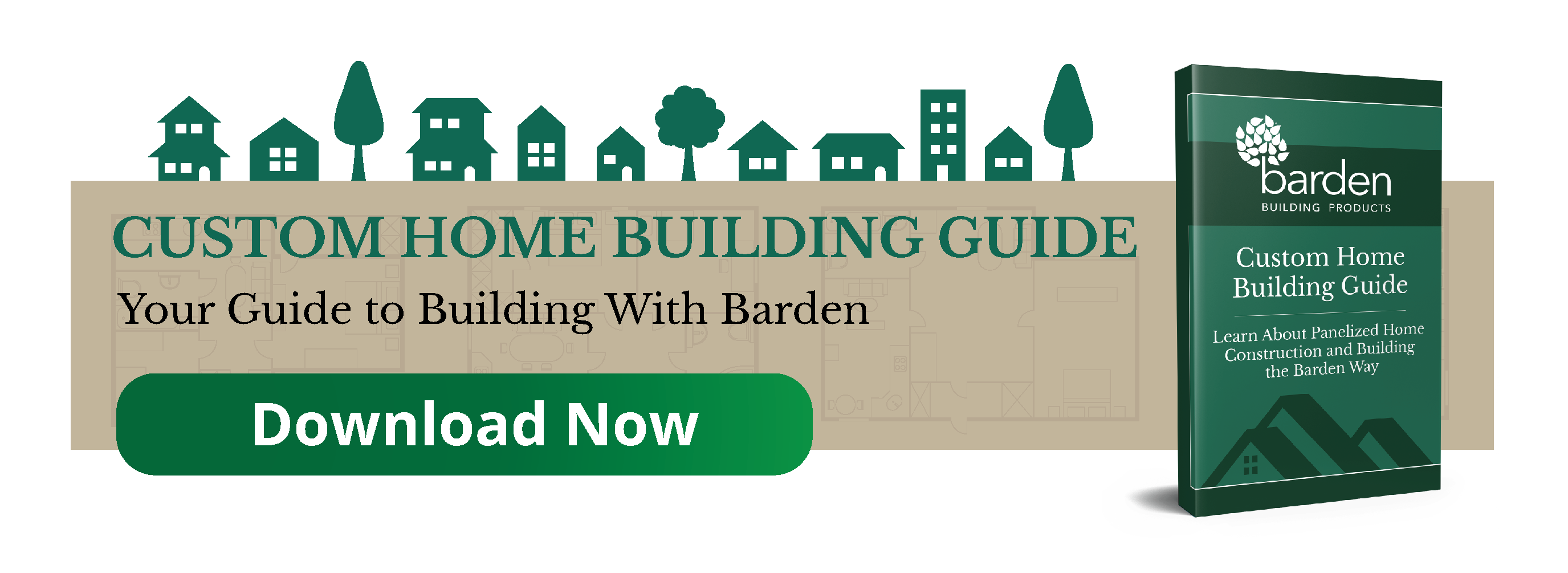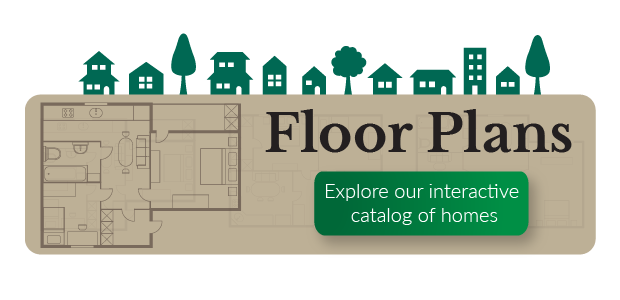
You've got the ideal plot of land -- it's spacious with a great view. You’ve worked with your Barden Independent Dealer and internal design team to create a floor plan tailored to your needs.
Now, all that’s left to do is get sit back and watch your new home get built.
Hold on.
Did you remember the sun? The wind? Or what about the beautiful landscaping you’ve been planning?
The position of your home on its lot, as well as design elements like window and room placement, make all the difference in how you’ll enjoy your living space.
Let’s go over our new home site orientation checklist to make sure your house is more in sync with its environment.
New Home Orientation Checklist: Working With The Environment
While there are plenty of things to consider when creating your custom home, here are 5 environmental factors we see future homeowners often overlook in their home site orientation:
- Daily light cycle
- Yearly light cycle
- Wind direction
- Landscaping
- Views
1. Daily Light Cycle
Though we all know the sun rises in the east and sets in the west, it’s easy to forget how its daily path affects your new home & you. Position your home incorrectly and your bedrooms may never get light from the sunrise or you may be doomed to suffer sunset television glare for life!
A properly positioned home allows morning sunlight into the bedrooms to help you wake up. It also prevents the sunset from blinding you and your family during evening activities.
Along those same lines, patio and porch placement along your home relative to the sun’s daily path is also something to be mindful of. No one wants to be in the sweltering heat or blinded by the sun while trying to relax outside.
2. Yearly Light Cycle
Another overlooked element when it comes to the sun and your home is how architectural design features can help keep utility bills in check against the yearly light cycle.
During the warmer months the sun is higher in the sky, oftentimes requiring air conditioning, fans, and open windows to cool down our homes.
Overhangs incorporated into your custom home’s design can block out the harsh summer sun and keep your windows in the shade. This, in turn, prevents the summer heat from penetrating your home and your wallet with cooling costs.
On the flip side, overhangs help keep your home warmer in the winter months. How? In winter, the sun is lower in the sky, as are its rays. Properly designed, overhangs can allow these warm rays to shine into your home, unobstructed. It may seem minimal, but it truly does make a huge difference!
Between seasons, a more subtle phenomenon occurs.
In the summertime the sun travels on an arc coming from the north. In the winter, the arc shifts southward. Using the same logic from above, you’ll want more light coming into the house in the winter and less in the summer. To do this, positioning the main living space with a long wall with several large windows facing directly south (or as close as possible) will take advantage of the valuable winter sun. Decreasing its northern exposure ensures your home stays comfortable during the hot months.

3. Wind Direction
We pay good money to move air through our homes to keep them at a comfortable temperature year-round but rarely consider nature’s air conditioning as a solution. Checking local weather patterns for the prevailing wind direction and adding windows to take advantage accordingly can set your home up for a beautiful, cooling summertime breeze.
4. Landscaping
Landscaping has a lot of potential in managing your home’s exposure to the elements.
Just like the sun’s path, wind also changes direction depending on the season. What else changes seasonally? The amount of leaves on the branches of your landscaping of course!
An expert can landscape your home so that leaves on trees and other large plants can direct wind toward your home in the summer. In the winter, those same plants can act as a wind barrier. This requires an exceptional set of skills and knowledge, but how cool is that?!
The sun’s path and position in the sky can also play a role in how well plants around your home take. If you’re a gardener and plan to have beautiful beds along your home, keep its orientation toward the sun in mind. Plants need plenty of sunlight to thrive!
And if nothing else, landscaping can improve your custom home’s curb appeal.
5. Views
Far too often we see customers picking floor plans before choosing a lot to build on, thus completely ignoring what you’ll see from the windows of your beautiful new home. On top of everything above, you’ll want your windows positioned to view the most beautiful parts of your new surroundings. Great views are a terrible thing to waste.
Building Even More Harmoniously With Nature
For some, the physical orientation of their home can take a bit of a deeper turn – one that adheres to Feng Shui principles. While this may seem like a sharp turn away from traditional construction principles, there are some things worth considering to help make your home a place of respite and relaxation. In fact, some of the principles already tie into what we’ve discussed above.
When applying Feng Shui principles to your home the goal is to align the its design and placement with the natural world to promote positive energy flow (chi), enhance well-being, and attract prosperity.
- Positive Site Selection – Steer clear of properties facing directly towards sharp objects, like the corner of another building, or located at the end of a straight road, as these are believed to direct negative energy toward the home.
- Material Selection – Incorporate the five elements (wood, fire, earth, metal, and water) into the home's orientation and landscaping to balance energy.
- Window and Door Orientation – Ensure the front door does not directly align with a back door or large window, as this can cause chi to flow too quickly through the house, potentially causing missed opportunities. Maximize natural light and consider views from windows to connect the home with positive external features, like gardens or natural landscapes, while minimizing views of potentially harmful elements (e.g., sharp corners of neighboring buildings).
- Interaction with Nature – Design gardens and outdoor spaces to promote a sense of peace and provide a positive view from the house. Use curves rather than straight lines to encourage the smooth flow of chi.
Choosing the Best Home Orientation
Designing a home that meets all your custom needs and considers environmental phenomena is a big undertaking. That’s why our expert draftsmen are available to help you.
At Barden, our team is always willing to lend our expert advice and opinions to help you create your perfect home. All you need to do is ask!
Find Your New Custom Home
Check out our interactive Floor Plan Gallery


